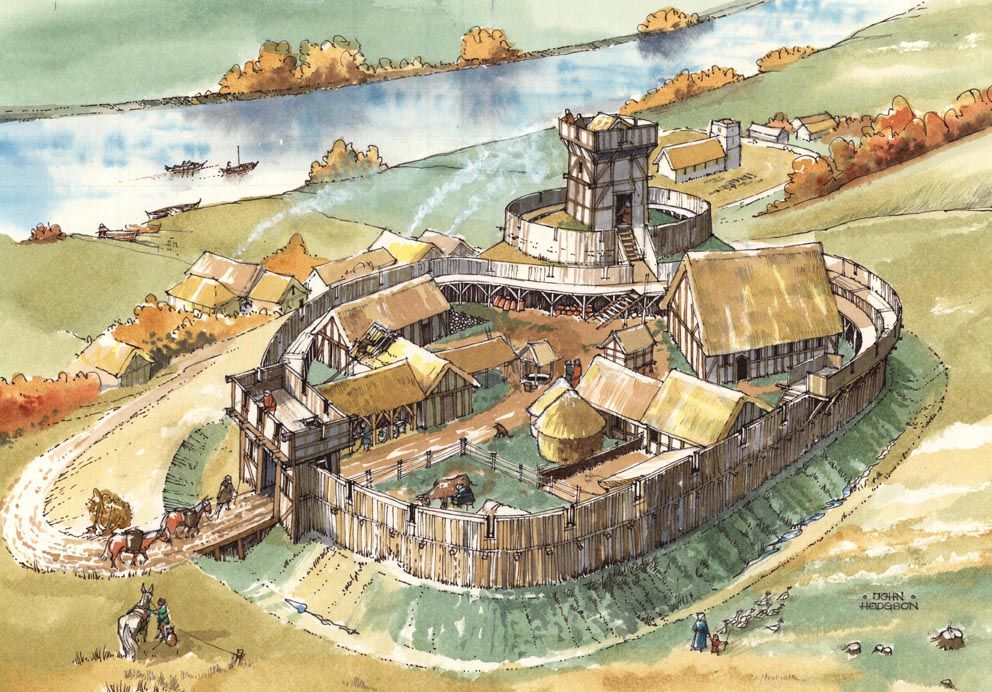Rudimentary Defenses (sage ability)
Provides understanding of basic military defensive structures, commonly used as outward works for more sophisticated structures or as hastily built structures to defend a camp or strategic position during war. The ability grants knowledge of how to plan and place palisades, ditches, dikes, berms, crude stone walls, sanitary channels, barracks, canteen and watchtowers, and how to make correct estimations for the skilled and unskilled labour required for these tasks. The ability does not, itself, grant any skill in the actual making of these structures, or how to lead labour crews; only the design of these fortifications is included. However, it does allow for making plans that can be followed accurately and easily by skilled workers.
The player character may personally design the layout according to their preferences, or pre-existing designs may be implemented. The materials employed are limited to earth, sand, gravel, logs and planks, bricks and broken stone. The total mass of material depends upon how much area is to be fortified and to what degre. Cubic feet of solid structure should be determined (ignoring empty space), and then calculated by total pounds of weight (taking note the density of material). Total time to create the structure, then, is 0.117 man hours per lb. No more than eight workers may be employed per 10 x 10 ft. area being constructed.
Some notes on these structures is included below. Working animals can be substituted for hours of labor, depending on their animal power.
Palisade
A defensive wall made of wooden stakes, usually tree trunks, as a curtain structure or as an enclosure (stockade). Typical construction consists of logs aligned vertically, with no free space between. The trunks are sharpened and pointed at the top, driven into the ground and optionally reinforced with additional construction. As maximum log size is 16 ft., requiring 3 ft. below ground, palisades cannot be taller than 13 ft. A palisade that is 10 ft. long, 10 ft. tall and made of 8 in. diameter logs would require 12 ft. logs, would require 61 longs, would weigh 3,558 lbs. and would require 415 hours of labor.
Ditch & Dike
A channel dug into earth and clay, usually supported by a dike, where the excavated dirt is packed into a raised defensive work, behind and adjacent to the ditch. Depth of the ditch, and therefore the height of the dike, varies. A ditch that is 10 ft. long, 6 ft. wide and 6 ft. deep, will enable a dike that is 11 ft. wide and 6 ft. high. The total excavation would weigh 49,565 lbs. and require 3,254 hours of labor. Optional shoring could be added, particularly if the ditch is to be flooded with water to form a moat. Including the space for the dike, the area of the ditch and dike together would allow a crew of 15 workers.
Berm
A level space, shelf or raised barrier, serving as a defensible platform upon which to build fortifications and other defensive structures. Most often, a natural upraised area is leveled by removing extraneous material. The amount to be removed naturally varies, but the amount of material to be removed is usually exhaustive. To remove a 10 ft. diameter cube of earth and clay would consist of 77,445 lbs. of raw material and require 9,040 hours of labor.
Crude Stone Walls
These are low walls made of broken stone and mortar, primarily used to drive attackers towards those places where the attack is best met by the defenders; sometimes these walls are high enough to dissuade horses from jumping. They might be built atop a dike or as a support for palisades. A stone wall that is 10 ft. long, 6 ft. high and 6 in. deep, with mortar, would weigh 2,556 lbs. and require 298 hours of labor.
See Fortification
